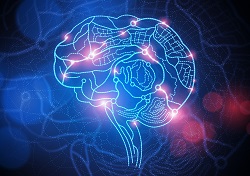The brain says walk, and paralysed rats obey
In healthy individuals, the brain sends the spinal cord a variety of signals that activate the muscles so that a person can walk. But when there’s a spinal cord injury, most of these pathways are interrupted, making it impossible for the spinal cord to receive any information. However, in a study that benefited from an EU research grant for the project HOW2WALKAGAIN, scientists discovered that given the right stimulus, the brain can reroute its information through different pathways. This makes movement possible once more. Their findings were published in the journal ‘Nature Neuroscience’. A series of experiments were conducted to train permanently paralysed rats in controlling their limbs again. The rodents underwent therapy using robot-assisted rehabilitation and electrochemical stimulation of the spinal cord. During the therapy, the spinal cord was first stimulated with pharmaceuticals, followed by electrical stimulation below the level of the injury to activate the hind leg muscles. Over nine weeks, the rats were trained to walk with the aid of a gravity-assist harness, which helped them to remain upright and move forward in a natural way. With training, the rodents gradually learned to control their hind legs without support from the harness and also without any electrochemical stimulation. Nine weeks post-injury, trained rats could walk and swim and had regained powerful leg movement. Leonie Asboth, lead author of the study, explains this remarkable recovery in a Swiss Federal Institute of Technology (EPFL) news segment: “Very specifically, we found that the motor cortex was able to send information again to the circuits below the level of injury through the pathways that are still spared and located in the brainstem.” The researchers scanned the brains of healthy and injured rats using a light-sheet microscope. This made it possible for them to compare the pathways through which the motor cortex sends information to the spinal cord. The 3D images confirmed that although motor cortex projections were interrupted after injury, some neurons had been spared in an area of the brainstem called the reticular formation. With therapy, new connections were created from the motor cortex to the brainstem, and from there into the spinal cord. “What is new is that at the end of the therapy, the rats that should be paralysed are actually able to walk freely overground in the total absence of electrochemical stimulation of the spinal cord. These results are providing essential information in the path towards clinical application in human spinal cord injury. For this reason, we are currently conducting a feasibility clinical study at the university hospital in Lausanne,” Gregoire Courtine, lead researcher for the project at the EPFL, adds in the same segment. By increasing knowledge of the mechanisms that lead to restored movement in paralysed rats, HOW2WALKAGAIN (Mechanisms of recovery after severe spinal cord injury) is speeding up clinical implementation of safer therapies to improve the quality of life of individuals suffering from spinal cord injuries. For more information, please see: CORDIS webpage
Countries
Switzerland



